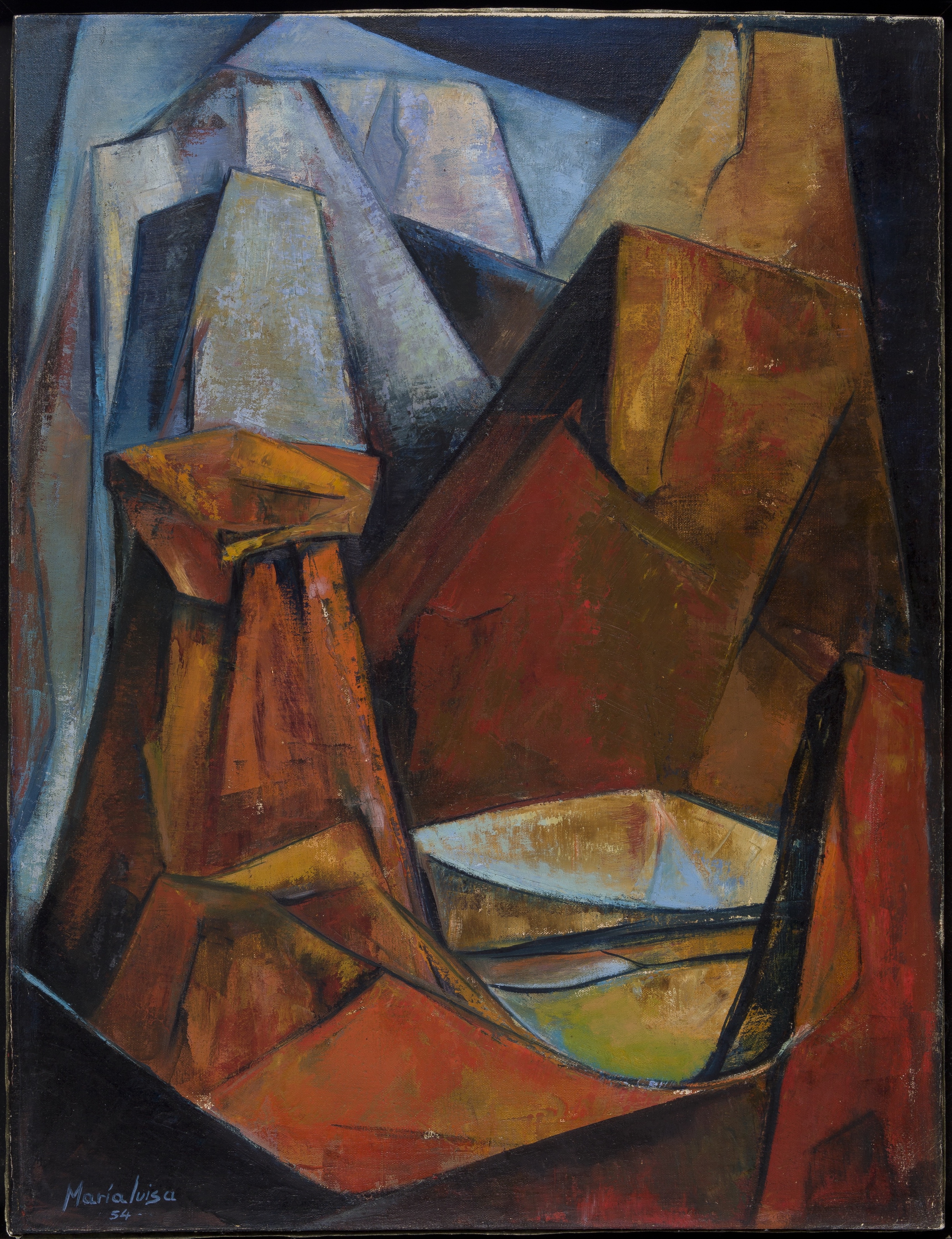The Davis Museum is closed for Wellesley College’s winter break. Please join us at our spring opening celebration on February 5, 2026, at 4 pm.
Untitled (Andean Landscape)

María Luisa Pacheco, (La Paz, Bolivia 1919—1982 New York, New York, Untitled (Andean Landscape), 1954, Oil on canvas, Gift of Anne Sprightley Ryan in honor of James D. Oles 2020.29
This landscape painting by María Luisa Pacheco was recently gifted to the Davis Museum. Born in La Paz, Bolivia, Pacheco began her artistic education in 1934 at the Academia de Bellas Artes. There, she studied under Cecilio Guzmán de Rojas, the chief proponent of indigenismo, an art movement that focused on indigenous cultures and aesthetics, in Bolivia. She continued her education at the Real Academia de Bellas Artes de San Fernando in Madrid, and studied privately with artist David Vásquez Díaz, a neo-cubist portrait and landscape artist. Both Guzmán de Rojas and Vásquez Díaz profoundly influenced her art. Upon her return to Bolivia, Pacheco joined the faculty of the Academia de Bellas Artes. In 1956, she moved to New York City, where she would receive three consecutive Guggenheim Fellowships from 1958 to 1960. Inspired by the Quechua and Aymara people of Bolivia and the glaciers and peaks of the Andes Mountains, Pacheco is recognized for her promotion of abstraction in Latin American art.
In Untitled (Andean Landscape), Pacheco depicts an abstracted, linear landscape that alludes to the Andes Mountains. Dark outlines separate the canvas into multiple planes, shaping the volume of the mountains and creating layers of space. A stark contrast of oranges and blues delineates foreground and background, enhancing the three-dimensional space. In the foreground, a small group of outcroppings surround a glacial lake, which reflects the ochre of the mountains on its pale blue surface. The ice blue of the gigantic peaks in the background suggests their grand, snow-covered heights. Pacheco has covered every part of the canvas in a variety of contrasting colors and textures, creating a vibrant atmosphere. In this mature work, she used cubist angularity to compose this Andean landscape.